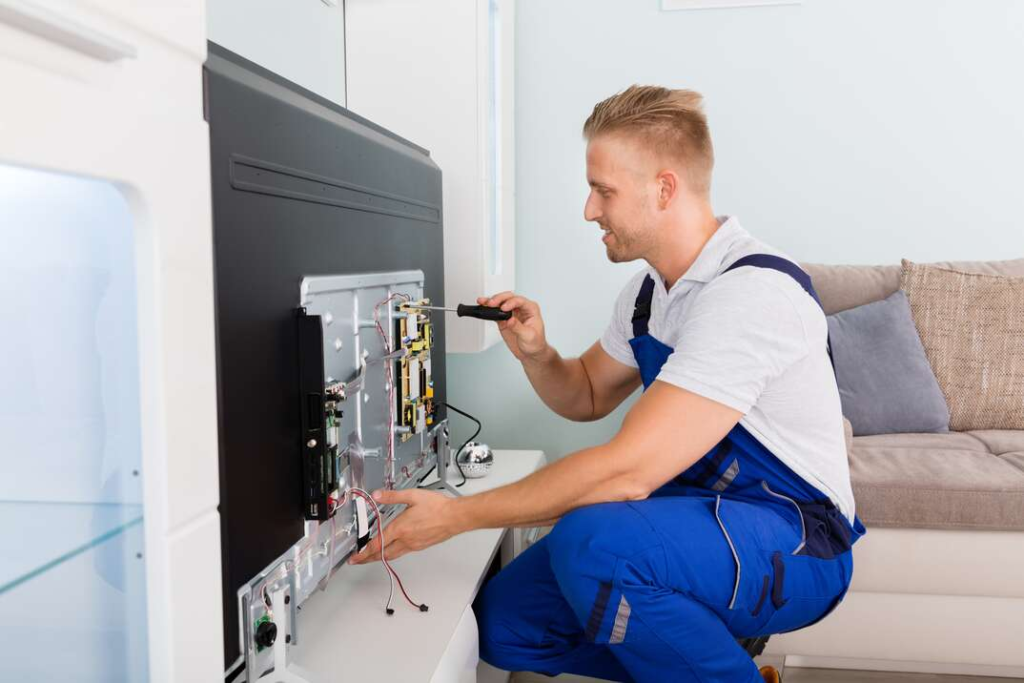The television repair industry is undergoing a significant transformation as smart TVs dominate the market. Here’s how these advanced devices are reshaping repair services:
Key Changes in TV Repair
Software Over Hardware Issues
More repairs now involve software troubleshooting (updates, app crashes, connectivity) rather than traditional component replacement
Repair technicians need IT skills alongside electronics knowledge
Increased Remote Diagnostics
Many issues can be diagnosed and sometimes fixed remotely via internet connection
Manufacturers can push software patches without physical repair visits
Shorter Product Lifecycles
Faster technological obsolescence means fewer long-term repairs
Consumers often replace rather than repair when new features emerge

Component Modularity
Smart TVs are increasingly built with replaceable modules (main boards, power supplies)
Easier board swaps but harder component-level repairs
Specialized Tools Required
Need for proprietary software and diagnostic equipment
Manufacturer-specific training becoming essential
Challenges for Repair Businesses
Declining Margins: Many simple fixes don’t justify service calls
Parts Availability: Manufacturers often restrict access to replacement components
Right to Repair: Growing movement advocating for consumer repair options
Warranty Complexities: Software issues blur traditional warranty boundaries
Future Outlook
The TV repair industry will likely evolve toward:
More software support and less physical repair
Manufacturer-authorized service networks
Subscription-based maintenance models
Increased focus on home network integration issues
